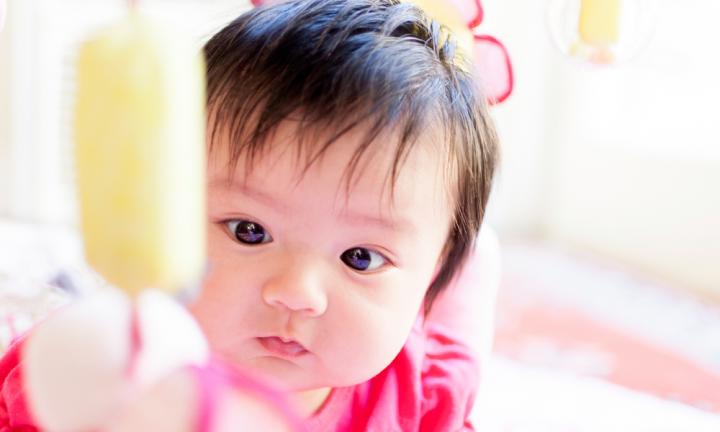Infants are born with everything in place to see, but it’s a whole new sense for them and vision doesn’t really begin to develop until birth. What this means is that in their early weeks and months, babies are road testing their vision as well as exercising their eye muscles.
What are babies practising with their eyes?
- focusing
- teaming their eye movements
- judging depth
- developing eye-hand coordination
- gaining a spatial understanding
The Children’s Vision Information Network in the US describes the biology of what’s happening with newborn eyes like this: “At first, infants have to move their whole head to move their eyes, but by two to four months they should start to move their eyes independently with much less head movement.
“When infants start to follow moving objects with their eyes they begin to develop tracking and eye teaming skills. Young infants haven’t learned to use their eyes together; they haven’t developed enough neuromuscular control yet to keep their eyes from crossing.”
It’s a busy time for babies
Melbourne optometrist Tim Fricke*, an expert in the treatment of children, agrees that it’s a busy time for bubs visually and developmentally and sometimes things don’t work perfectly. “It’s completely normal at times during the day in these first months of life that one or both eyes might momentarily turn in, making the baby look cross eyed,” Tim says.
“It’s when this happens a lot or the turning lasts quite a long time that you might want to consult an optometrist. “Ideally it shouldn’t be happening after about six to nine months of age.”
If parents are concerned or noticing some extended or frequent eye crossing after six months of age, they can consult an optometrist who has all the equipment on site to diagnose any vision problems, or they can see their GP.






















